As a amateur photographer forced against your will to work in some non-camera based occupation, your holidays (vacations, for my friends across the pond) are one of the few occasions that you really get adequate time to devote to your photography. Being away from the demands of work and home and with time to really do as you please, then the first thing you probably do, after downing an initial refreshing cocktail, is reach for a camera and head out of the door.
This desire to maximise your photographic productivity leads to a distressing issue – the pre-holiday camera kit preparation. Knowing that you are about to head off to photographic nirvana means much agonising about how much equipment to take, what sort of film to shoot, whether to go all analogue, all digital or a mix and, most importantly of all, whether any new equipment needs to be purchased before departure; we all know that shopping is not photography, but that doesn’t stop us doing it.
All this pre-departure preparation can ultimately result in much misery, as I convince myself that I can’t leave without covering focal lengths from 17-300mm and that it is possible that I may shoot 30 rolls of film in a week, my camera bag progressively bulges in an ever more concerning way. You don’t need a diagram to illustrate what a bulging camera bag leads to, that’s right, the inevitable leftward turn out of the X-ray machine and the ensuing hand search of shame at airport security. As my family gather sniggering behind me, I try to explain to a bemused airport employee (who well knows that these days cameras are incorporated into any phone), what a filter wrench is and why the camera doesn’t have a screen on the back to see the picture on. At this point a familiar volcano of regret wells up within me and explodes over the 20kg bag in front of me, ‘why can’t I just pack light’ I weep, ‘never again!’ I cry, as my wife leads me gently away and comforts me by shepherding me into the duty free shop. What is needed to avoid this scene is a travel camera, something small, lightweight, discreet and pocketable which slips through the airport scanner like an oiled weasel through a teflon pipe; ‘That’s right’, I hear you cry, ‘you mean the Pentax 67II!’
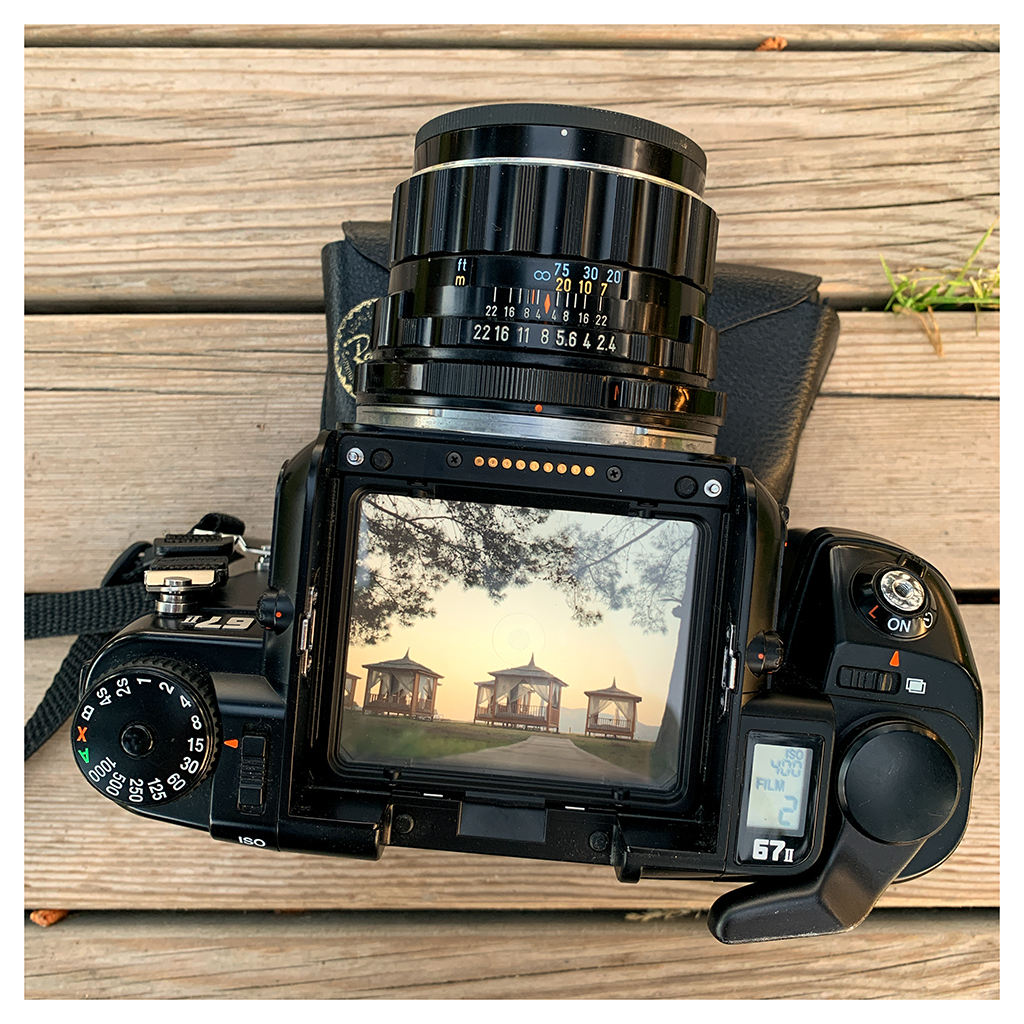
There is a school of thought on the internet that you should not undertake a trip with a new camera or, indeed, any new piece of equipment. ‘It’s untested!’ they cry, ‘what if it fails!’ they declaim, ‘you will miss the shot of a lifetime through a lack of familiarity with your equipment’ the finger wags at you from the opinion-stuffed internet photo guru at whose shrine you have paused to do puja. The trouble is that these nuggets of advice are all predicated on a belief that your travel pictures are important and valuable. I am here to tell you, dear reader, that—unless you are Neil Armstrong and you are taking pictures of your pal Buzz Aldrin on that trip you made in July 1969—then I’m afraid that your travel pictures are neither important nor valuable*. And in the very unlikely event that you are Neil Armstrong and you are feeling smug about how important and valuable your travel pictures are, then you need to watch this clip and get yourself in perspective
Don’t despair, when you get home you will probably look at your pictures once and be disappointed; but most people don’t take up tennis to play at Wimbledon, they do it for the enjoyment of the experience, and the enjoyment of the experience here is immersing yourself in taking the pictures, a flow activity if ever there was one.
*I am referring here to photography for pleasure, if your income depends on your travel pictures then by all means take the tried and tested equipment that you are used to!
Why 6×7?
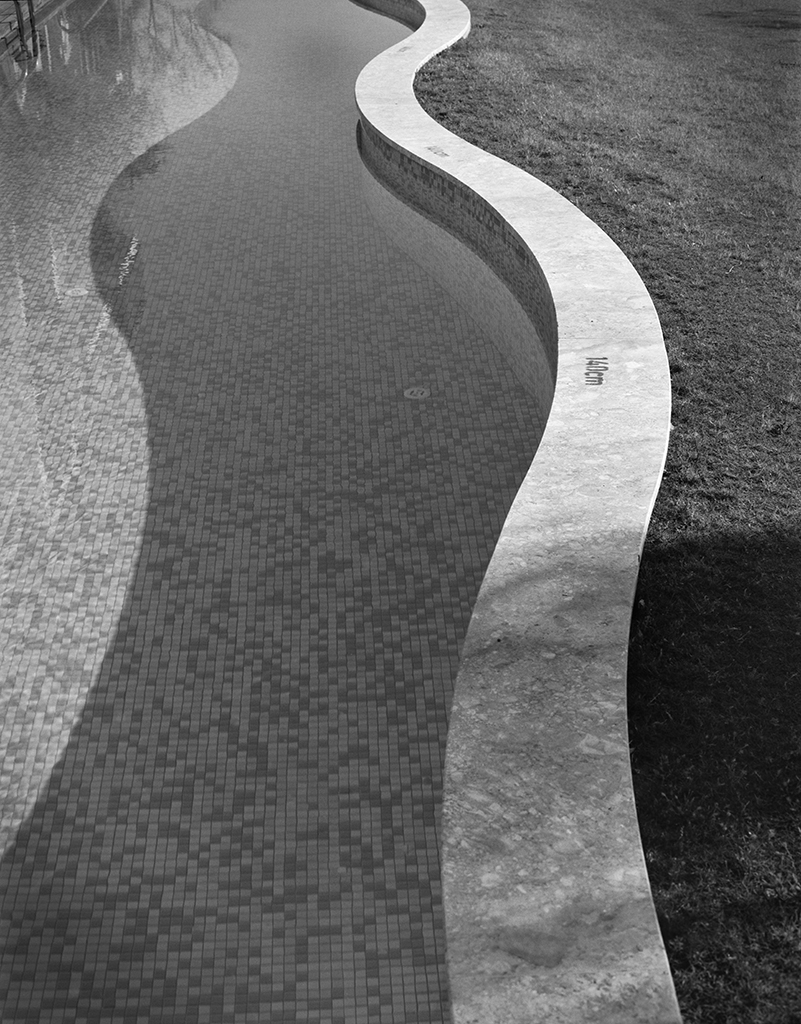
You can blame Tom Sandberg for the urge. I had recently bought his excellent Aperture monograph and while marvelling at the beautiful monochrome prints which I could have taken myself if only I had the vision and talent, I was struck by a quote:
‘When I bought a medium format camera for the first time,
I started dreaming in six-by-seven centimetres’
– Tom Sandberg
That is the sort of quote that ought to be strictly controlled by EU directive, preventing it from being placed into the hands of a known GAS sufferer. The line of reasoning is easy to follow:
- These 6×7 pictures are excellent…
- I haven’t shot 6×7 before…
- I have shot 4×5 which is almost the same ratio and I liked it…
- A 4×5 camera is a difficult proposition to travel with…
- A 6×7 camera would be much easier…
- You really should explore all the available medium format ratios, it’s your duty to yourself as a paid up film photo-nerd…
- The Pentax 67 has been in your consciousness for years as a camera that you ought to look at…
- I’ll just look on the internet and read every review of the Pentax 67 series I can find…
- I’ll just head over to WY cameras and check they haven’t got one in stock…
And there you have it, before you could say ‘overdraft’ I was the proud owner of a Pentax 67II in good, but not mollycoddled, condition and attached to the front of it was the legendary Pentax SMC Takumar 105mm f/2.4.
A note on model selection in the Pentax 67 family
If you are thinking about plunging into the Pentax 67 world yourself, and if you are I urge you to reconsider while your marriage and bank balance are still extant, you may ask why the 67II rather than one of the earlier and cheaper models? As I haven’t used of the earlier incarnations of this legendary camera, I cannot give you a balanced argument one way or the other. Suffice it to say, I was worried about the risk of damaging the metering system by mishandling the earlier chain-linked models, I preferred the built in handgrip and most of all I was attracted by the option of aperture priority exposure with an evaluative meter in an overgrown 35mm SLR design that the 67II offers. If you are going to use this camera on the go, I reasoned, then you may as well have all those mod cons which are so rarely found in a medium format camera. The 105mm lens may not be the ideal choice for travel (the 90mm might be a better bet here) but once you’ve read about the 105mm then you would need to be a stronger man than me to resist its siren call.
Up, up and away
So there I was, basking in the first flush of ownership and with just a couple of rolls through it when the time to leave for sunnier climes came upon us. As I crouched over my Domke rummaging in the cupboard of folly for more equipment to cram in, a revelation struck me. ‘Why not just take this? One camera, one lens and the time to get to know it properly’. I have written before on the liberating experience of eliminating choice in your photography and it was time to do it again.
The destination, Turkey. The mission: R&R, and an investigation as to whether a permanent, uniform sky covering of grey drizzle was now a global phenomenon or whether it was exclusive to the British Isles (I am pleased to confirm for my readers around the world that, at least as far as my investigations went, it does appear to be a problem that is confined to Blighty).
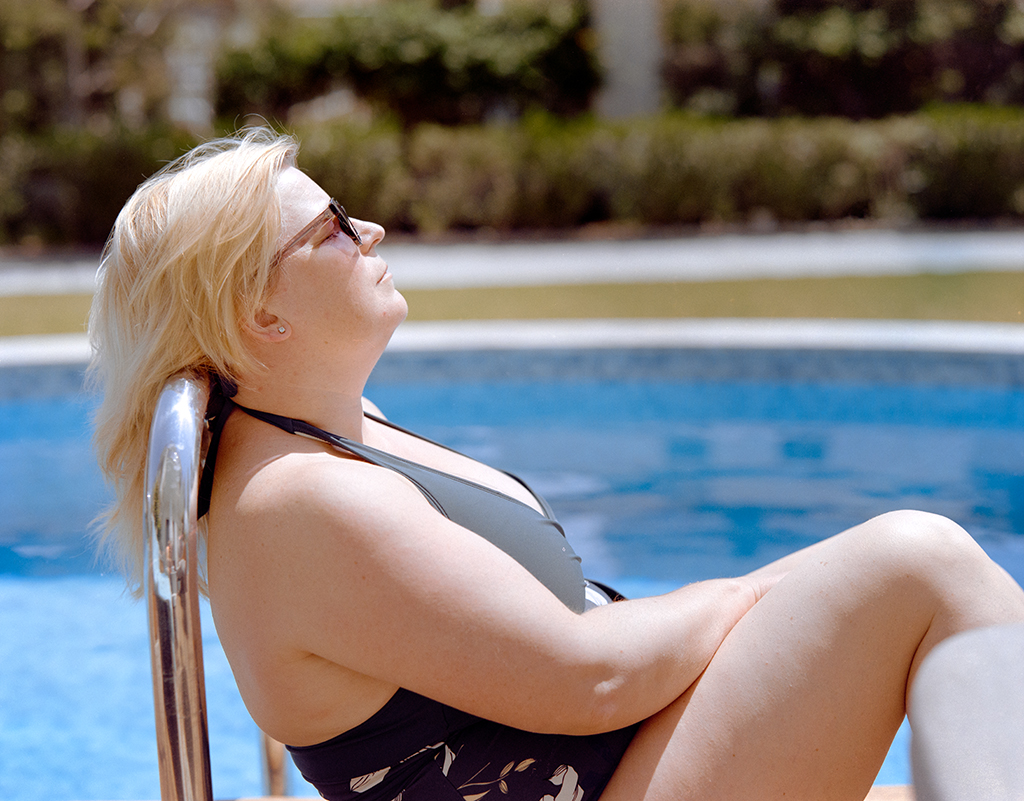
I popped my camera bag onto the conveyer belt, engaged in a spot of cheery persiflage with the smiling airport security chap, scooped it off the other end unmolested and, whistling, sauntered into the duty free shop to assess whether a giant Toblerone was something I needed in my life or not. Just me, my nearest and dearest, a selection of the finest, carefully curated colour and black and white films and a camera and lens combo the size and weight of one of those cabs which are so prevalent in shows such as ‘Ice Road Truckers’—nothing to see here.
The Pentax 67II in use
This isn’t really a camera review, but I suppose I ought to weigh in with my thoughts on wielding the beast, although there are plenty more systematic and thorough assessments out there. On arrival I loaded some Kodak Gold 200 into it and wandered outside to start with some family portraits. After all, this combination is a portrait machine and this is the time to add some portraits of your loved ones looking relaxed and happy to your portfolio.
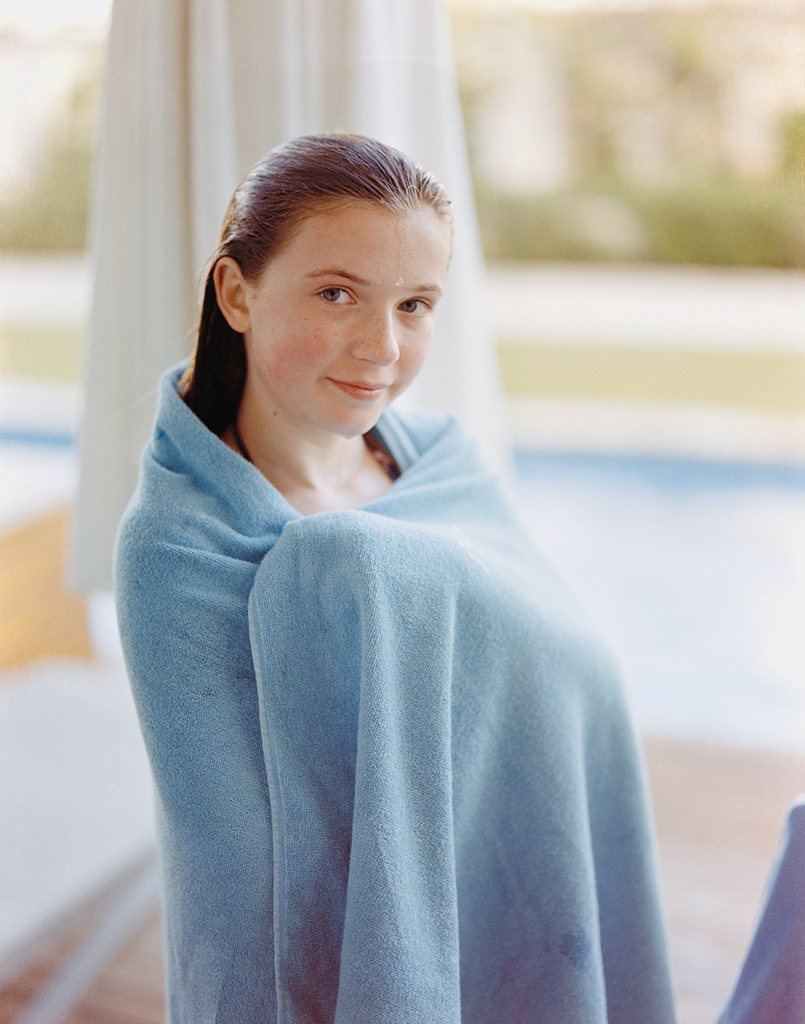
Much has been made of the shutter/mirror noise of the Pentax 67 series, and it’s true that you don’t get a Leica-like ‘snick’ as the thing goes off, but it’s quite bearable—from all I had read I was expecting something along the lines of a twenty-one gun salute that would activate nearby seismic activity detectors; life, it turns out, is all about successfully managing expectations. All in all, this is a highly functional camera for this sort of thing, it’s big but it handles like a 35mm SLR. Aperture priority on, evaluative meter engaged, focus and shoot, wind on. The image is large and bright and focusing is easy in good light, although this is by no means a 100% coverage viewfinder and you may find unintended things creeping in at the edges of the frame. All in all, using the camera like this for informal portraits, your main problem may be how quickly you can burn through ten frames of film and need to reload.
Reloading is, I think it is fair to say, challenging. Lining up the spool with the lug that holds it in place is a fiddle and if you have an expectant model waiting for you to get on with it, both their smile and yours may quickly become fixed and then fade altogether as increasingly base profanities are employed in attempt to cajole the blasted thing into place. Still as it’s mainly the cost and the inconvenience that attracted you to film photography in the twenty-first century, this sort of thing is kind of what you here for, and it does get (a bit) easier with practice. The 67II comes with dioptre correction, which is good. Unfortunately, on my copy at least, the dioptre correction knob, which is located behind the rubber eyecup, is very loose and changes all the time making focusing more painful than in needs to be. Whether this is a common fault I don’t know but it is easily remedied with a bit of tape over the knob to hold it in place.

The only other issue I want to raise is the lack of interchangeable backs, as for a colour and black and white photographer being able to change films between shots is a boon—you can shoot the same scene on different films without even needing to take the camera off the tripod. However, you don’t get this form factor of camera with interchangeable backs so if that’s a deal breaker you’d better look at the even more portable Mamiya RB or RZ67 instead; as noted above, with only 10 frames on a roll it won’t be long before you’re changing films anyway.
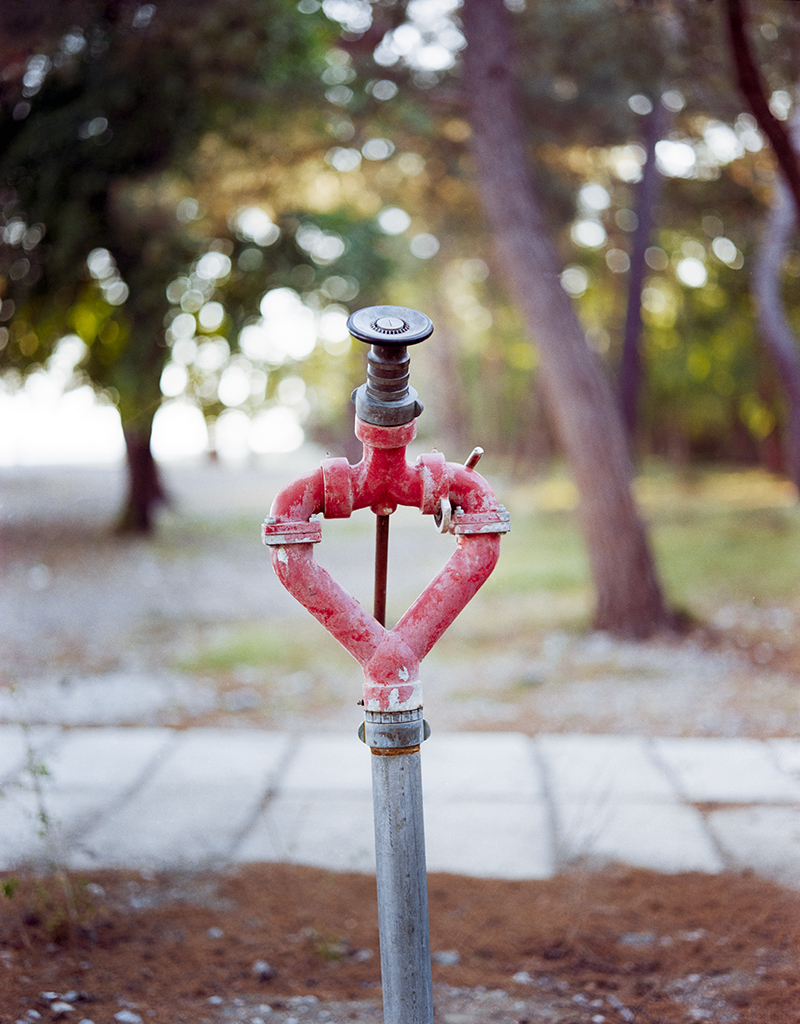
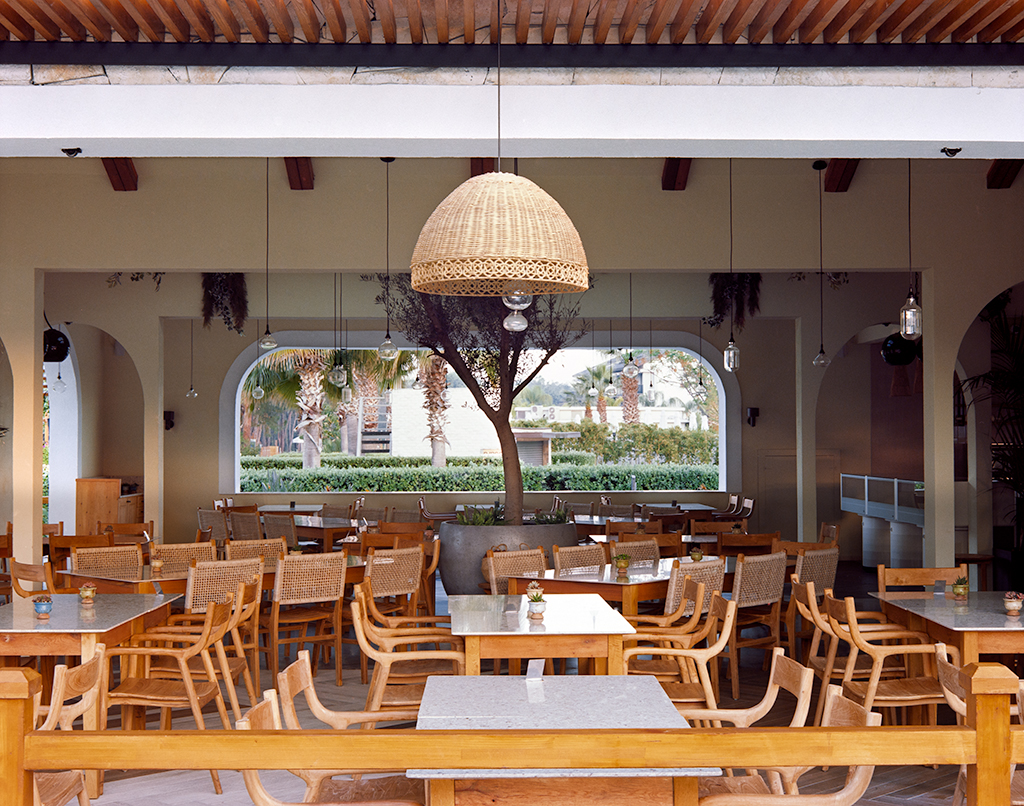
Local colour
So much for portraits, what else might you want to tackle with you new ‘pocket n’go’ travel camera? How about scenes around the hotel? If you want to shoot empty chairs in slightly muted and faintly melancholy colours then the 67II has got you covered, provided you remembered to pack some Portra of course, I didn’t so needed to dial down the saturation on the Ektar scans to fake it. The medium format look of an empty chair picture guarantees almost instant Instagram success.

For your non-photography followers out there you will want to show a warmer and brighter side to your holiday destination the leave the Kodak Ektar 100 turned up to the max for a suitable level of wish-you-were here jealousy induction.
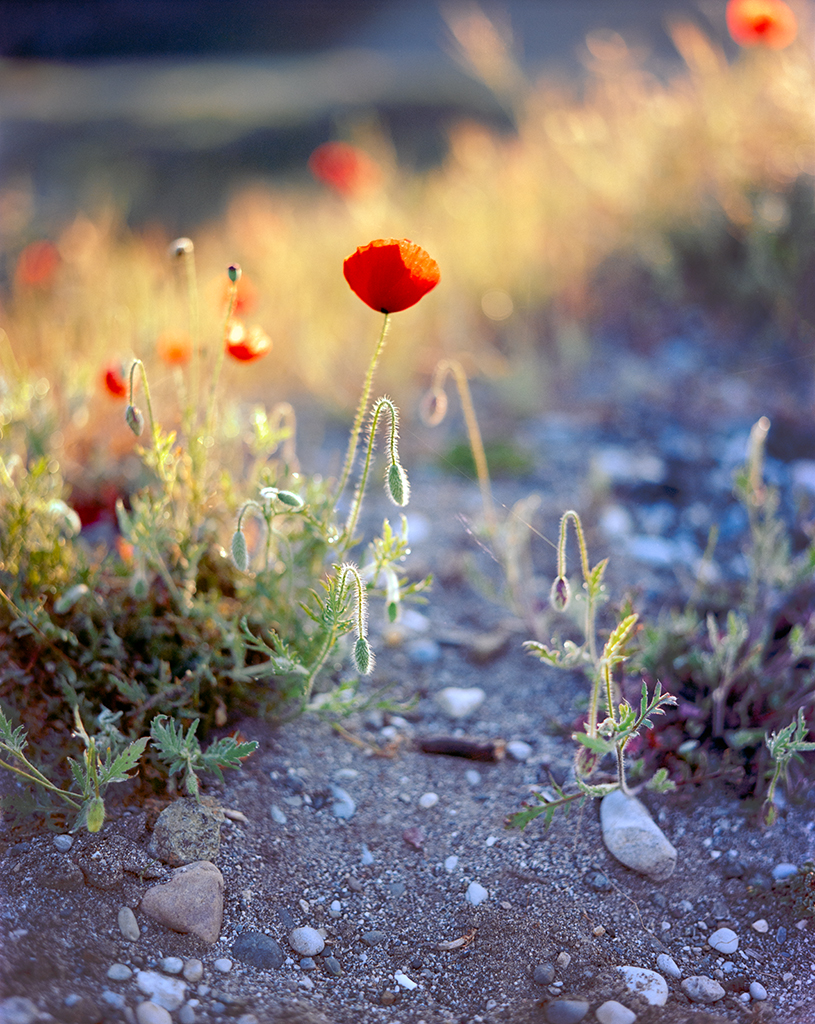
Landscape
Landscape photography is my home turf and, unlike in sport, the away team has an advantage here, coming to a place with fresh eyes always means that I see more potential pictures than I would at home. With the Pentax 67II you’re set up for landscape photography—short of jumping on a plane with a large format camera (and I have done that before and, yes, it is as difficult as it sounds) you are not going to get better image quality from film.
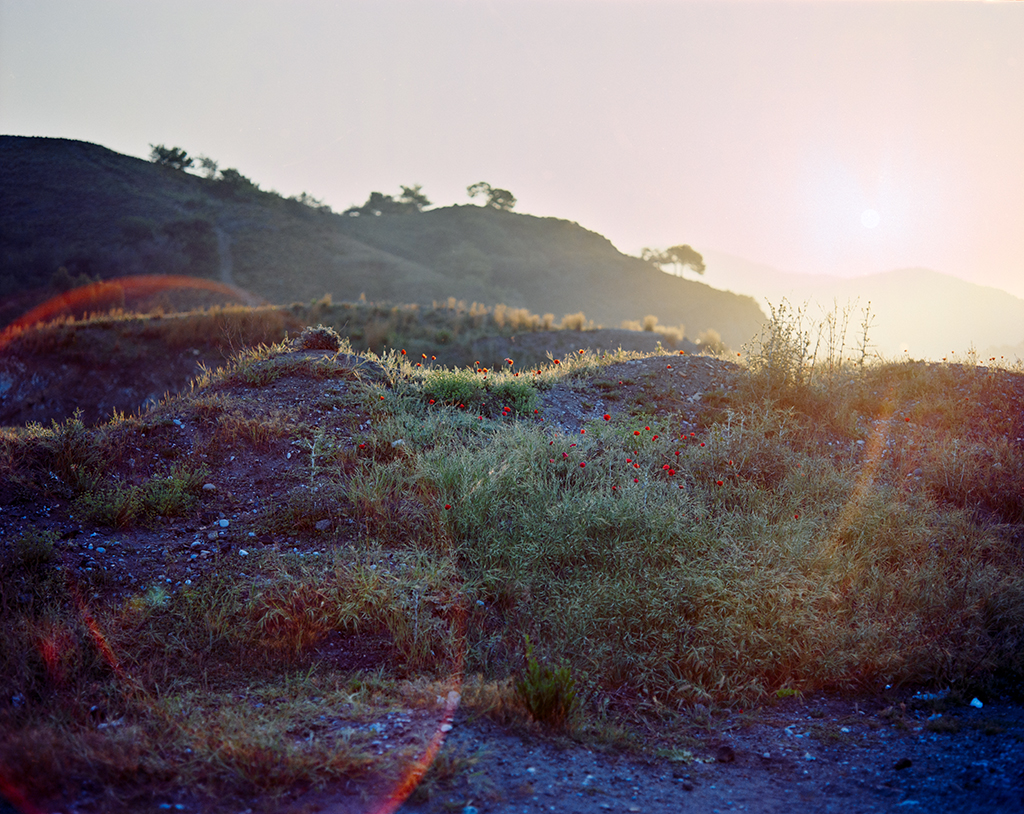
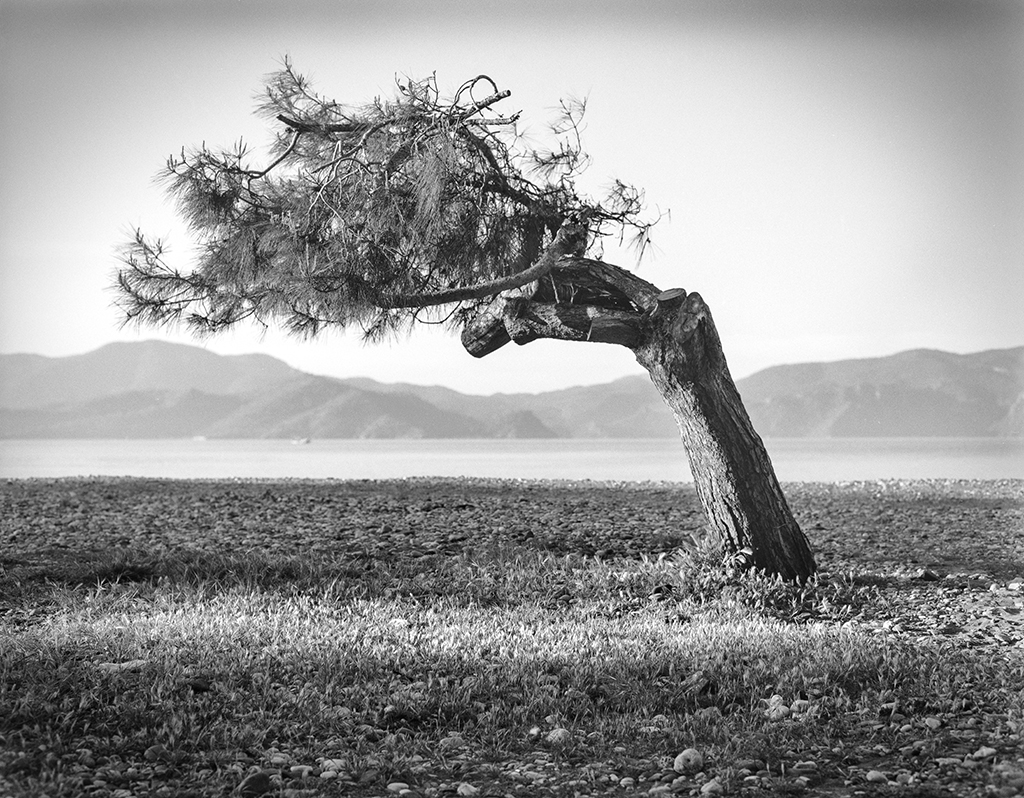
Pentax 67II, SMC Takumar 105mm f/2.4, Ilford FP4 Plus developed in 510 Pyro.
You may find that your travel tripod is not up to the weight of the 67. My trusty Manfrotto with the reversible legs can cope with a Hasselblad but the weight of the Pentax is stretching it to its limits, activating the mirror lock up function seems to help here.
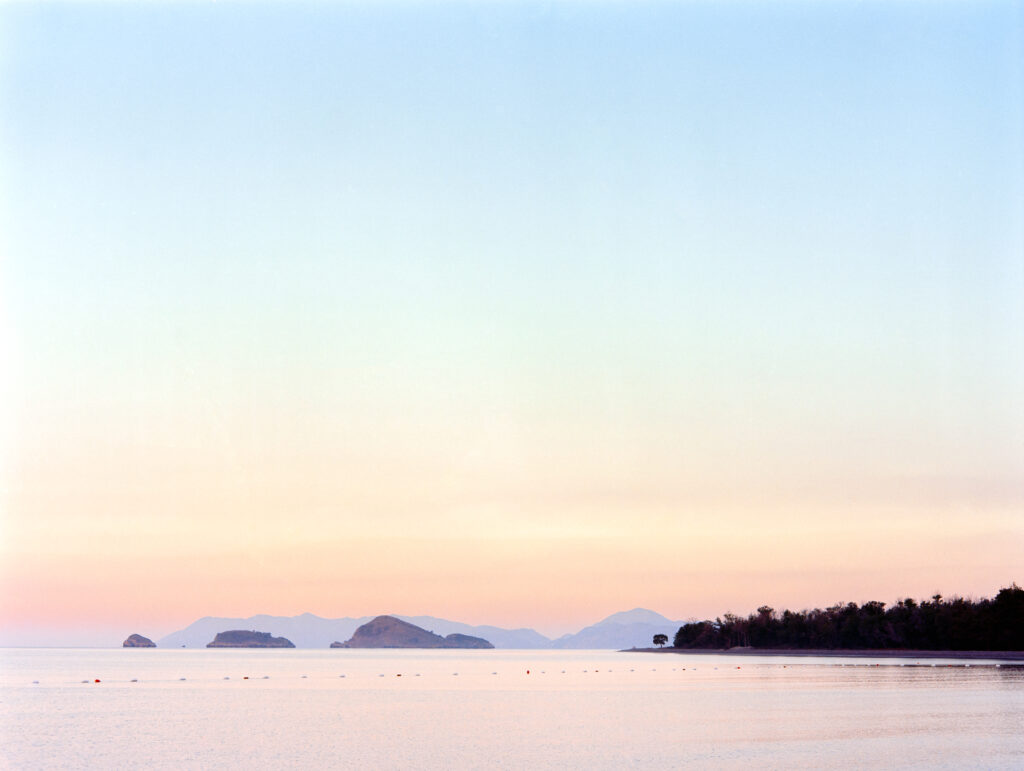
Wildlife & Sport
The average travelling wildlife photographer these days will sport a stacked sensor mirrorless monster capable of 1×107 frames per second at 60MP and couple this with a 600mm f4 lens to get those difficult birdlife shots; all nonsense of course, a Pentax 67II with a 105mm lens and Ilford FP4 Plus is what you need. If, while you are out checking a landscape, you spot a Mediterranean crested lark, then you will easily bring home the bacon with your do-it-all travel wünderkind. Likewise sport, David Burnett has already shown us that a large piece of film can give a beautifully different perspective on the Olympic games, why not emulate him at the beach volleyball court?
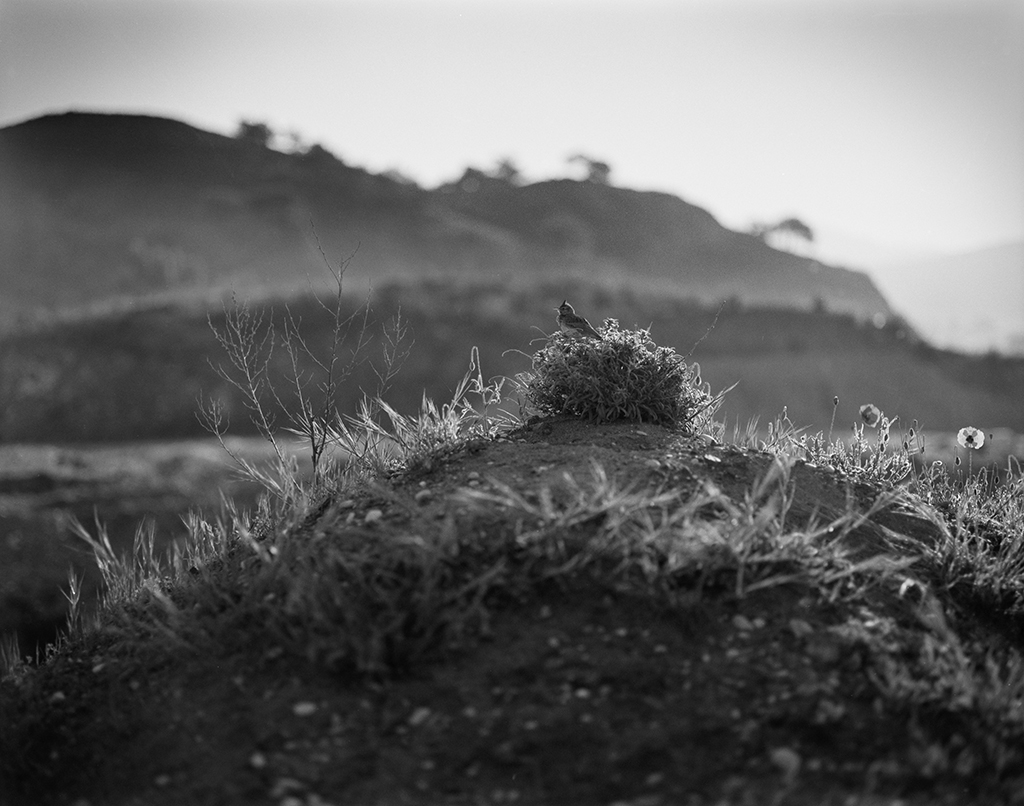
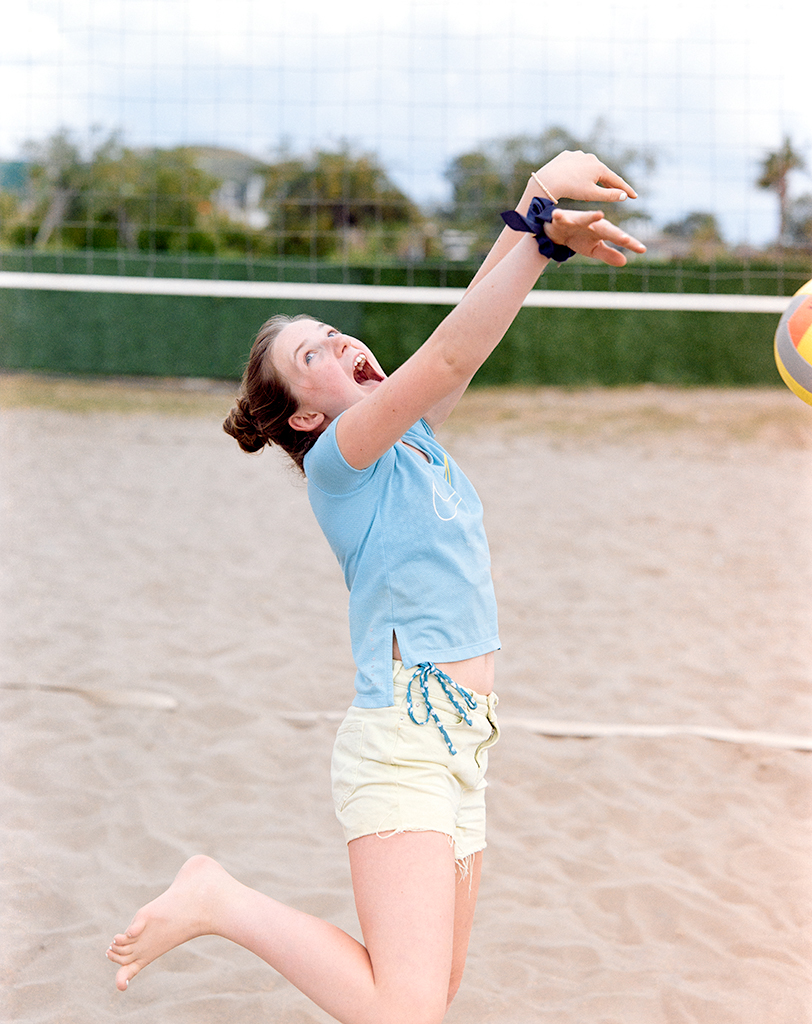
Out and about
After a couple of days of soaking in the atmosphere and sucking down refreshing beverages, you’ll probably feel up to an outing to investigate the local sights and attractions—don’t forget your Pentax when you go. From Fethiye we travelled to the town of Kaya Köyü, a former Greek Orthodox settlement abandoned after the Greek-Turkish population exchange of 1923. It is used as the model for the village in Birds Without Wings, Louis de Bernière’s excellent fictionalised account of those events set alongside the horrors of the Gallipoli campaign and the rise to power of Mustafa Kemal Atatürk. If you are travelling to Turkey then I would recommend slipping a copy of this book in alongside your Pentax. Kaya Köyü was definitely a time to load with monochrome stock. The interior of an abandoned house, lit only by shafts of sunlight filtering through the wooden slats covering the windows, can be a challenge for handheld photography. Fortunately with the maximum f/2.4 aperture of your 105mm lens you can open up more than on many a 6×7 lens (Mamiya 7 anyone?) and you’ll need to as you brace yourself for that mirror slap.
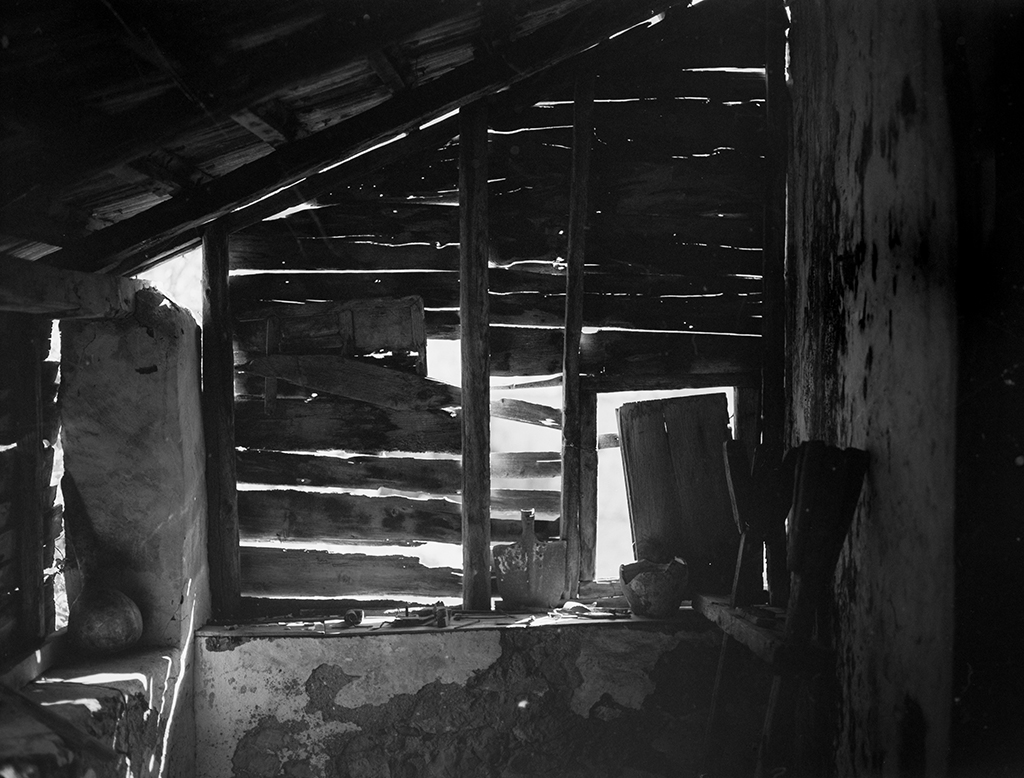
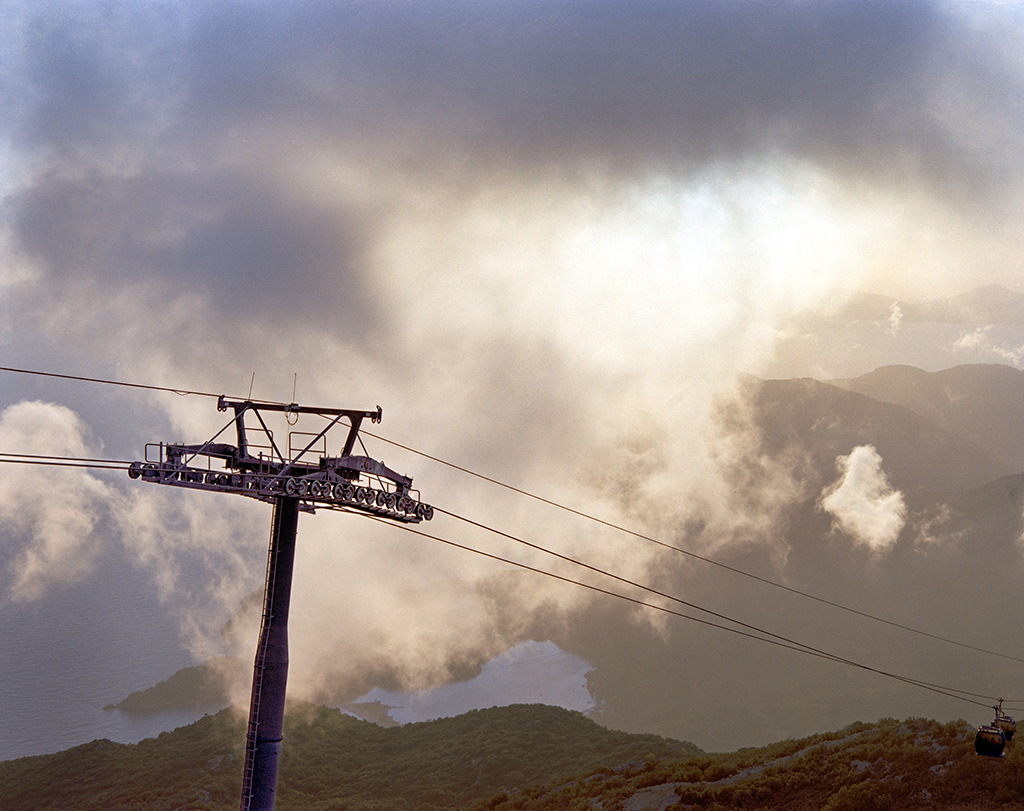
After Kaya Köyü we headed up Mount Babadağ by cable car. This mountain is the jumping off point for a thousand paragliders and overlooks the much photographed blue lagoon seen on the cover of many a Turkish travel brochure. It also has the great advantage from a photographic point of view of being wreathed in cloud, providing some much needed interesting light in what can otherwise be a universally blue sky destination. As the sun came and went behind the clouds the Pentax, perched on the observation deck at the top of the mountain, gobbled up colour and monochrome scenes to its heart’s content.
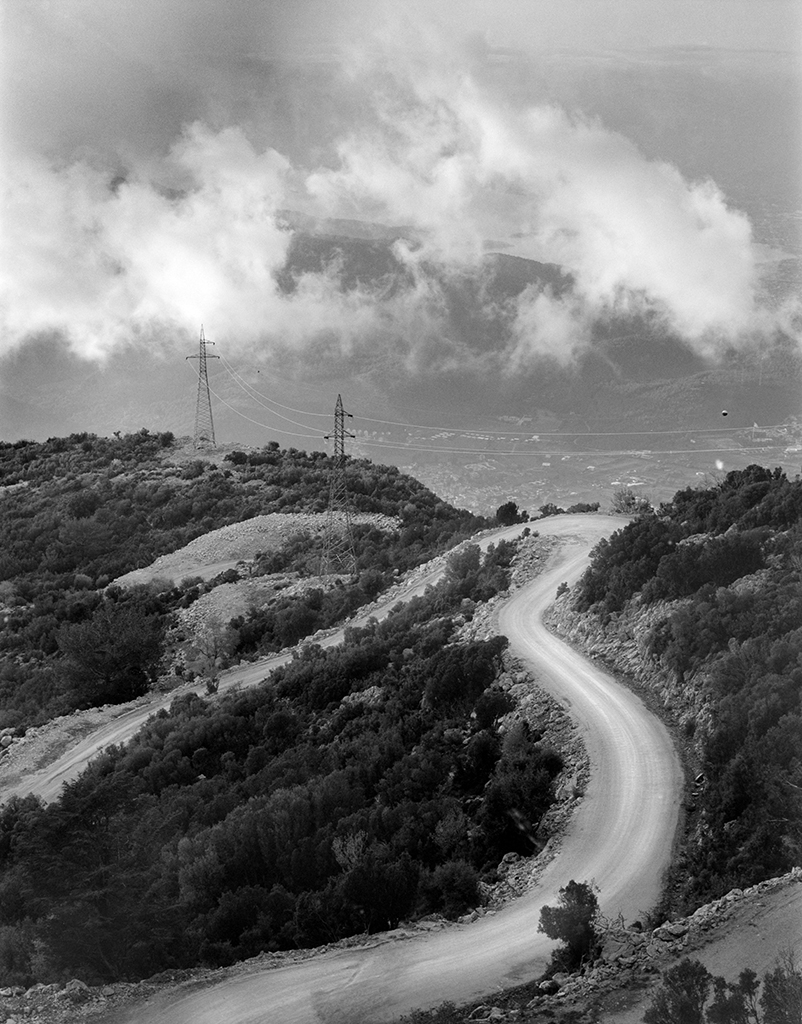
And so back to base
Your travel album at home probably lacks any significant number of photographs of yourself as, if you’re reading this, then you probably tend to be situated behind the camera. You may want to rectify this omission. With the Pentax 67II you don’t need to resort to your phone for a selfie, the SLR form factor and automatic exposure mean that any member of your party can easily bag a pic of the photographer before you pack your bags and head for home. And, once you get home, the best part of travelling with film—the chance to develop it, see what you’ve got and relive your experiences all over again.
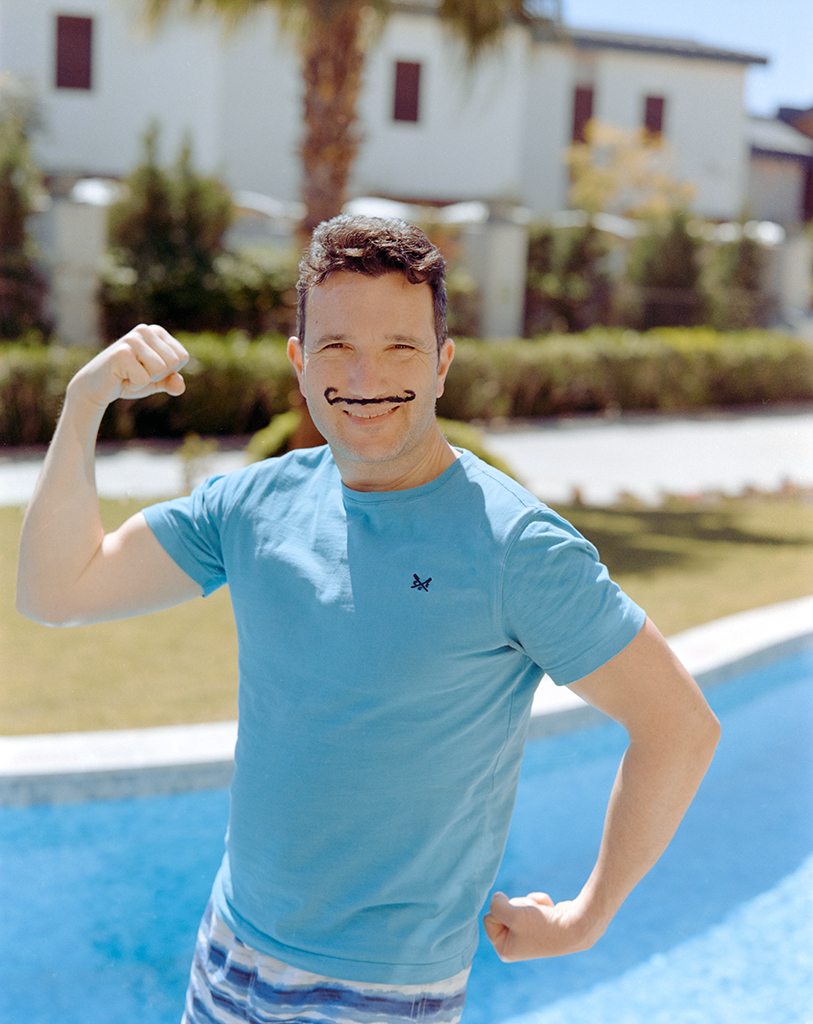
So next time you are planning a trip ignore the Olympus Mju and favour the Contax T2 with a contemptuous glance, slip a Pentax 67II in your pocket and jump on a plane—you won’t look back.
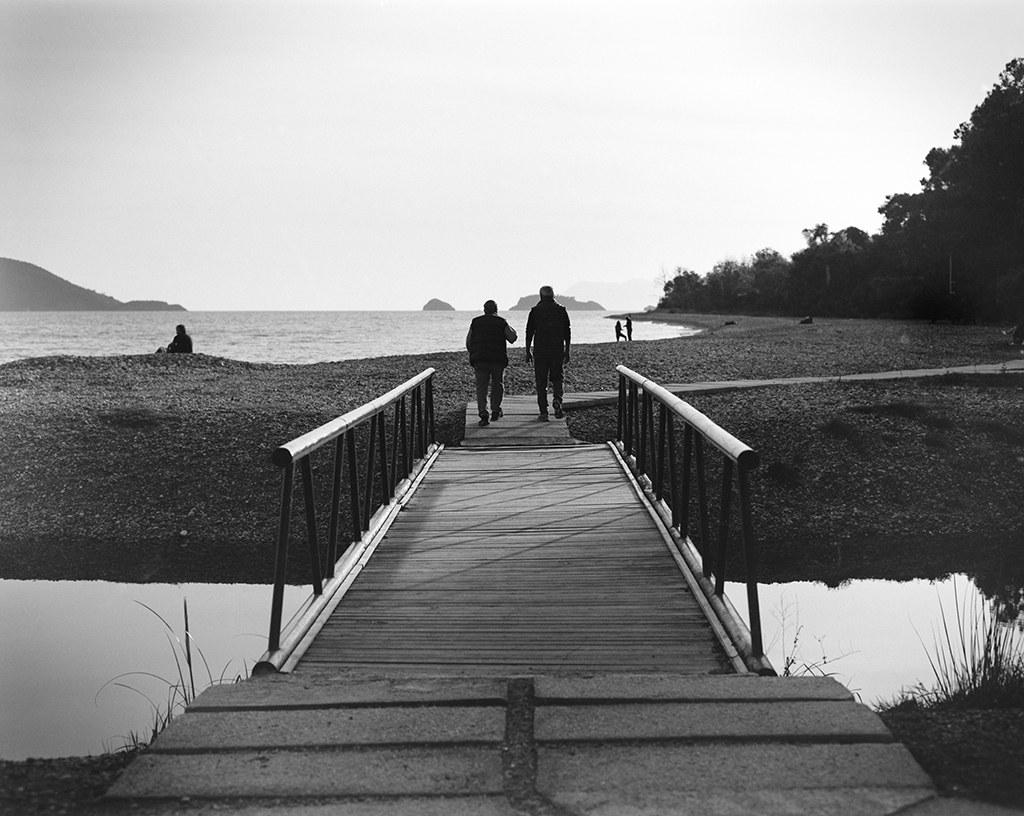
Thanks for reading, if you want to see more of my pictures Instagram is the place to head to.
Share this post:
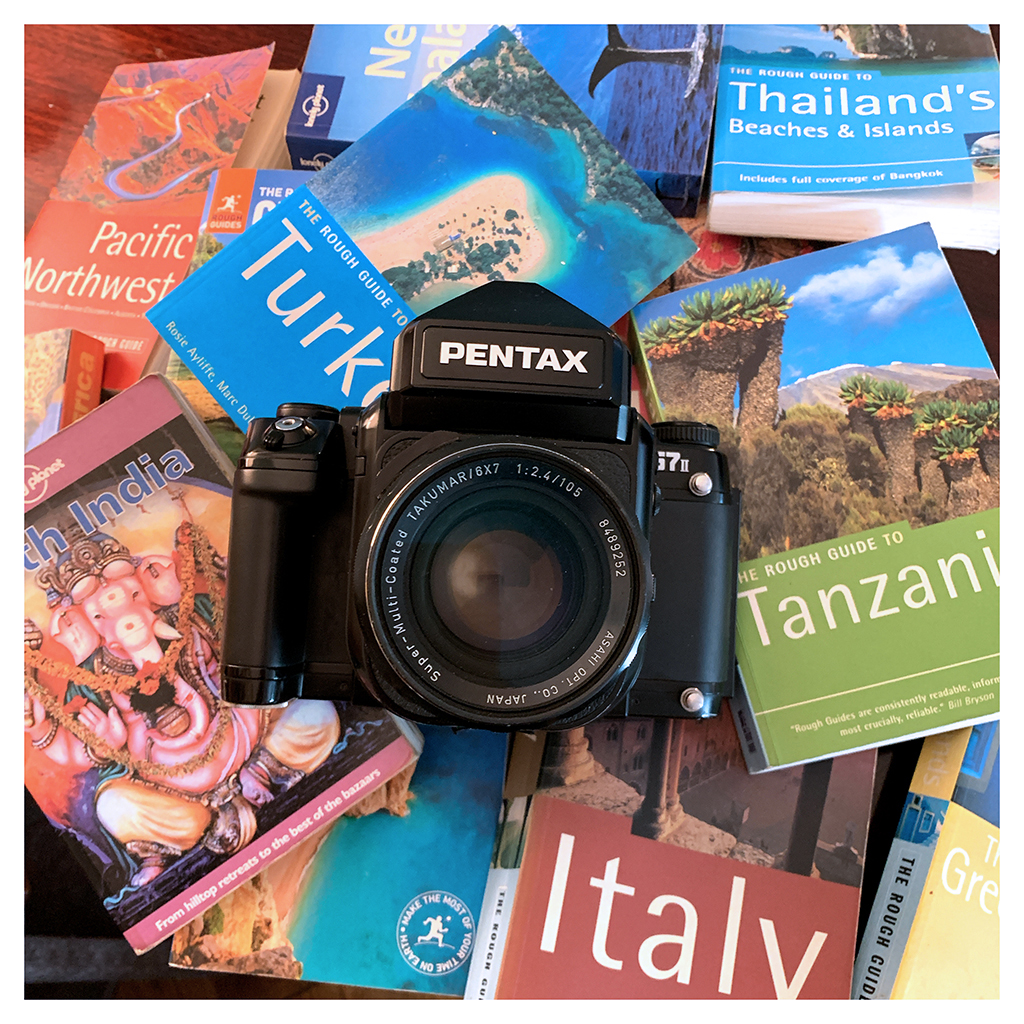
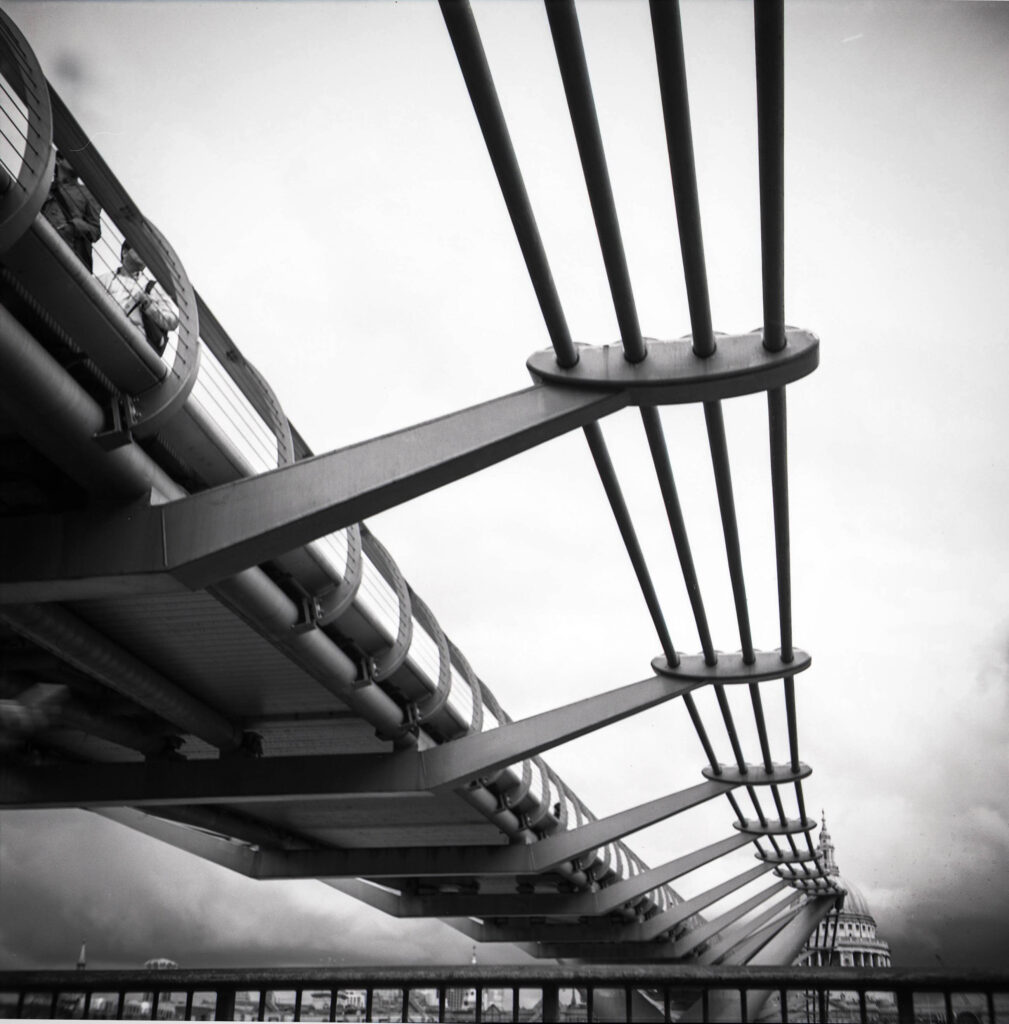
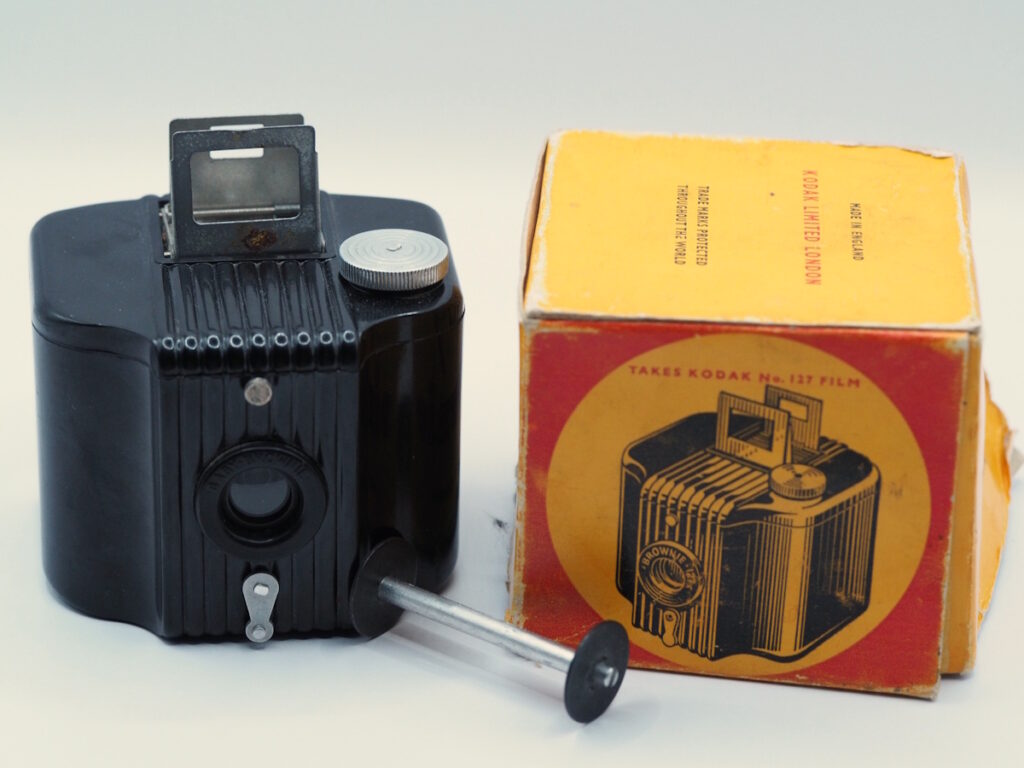
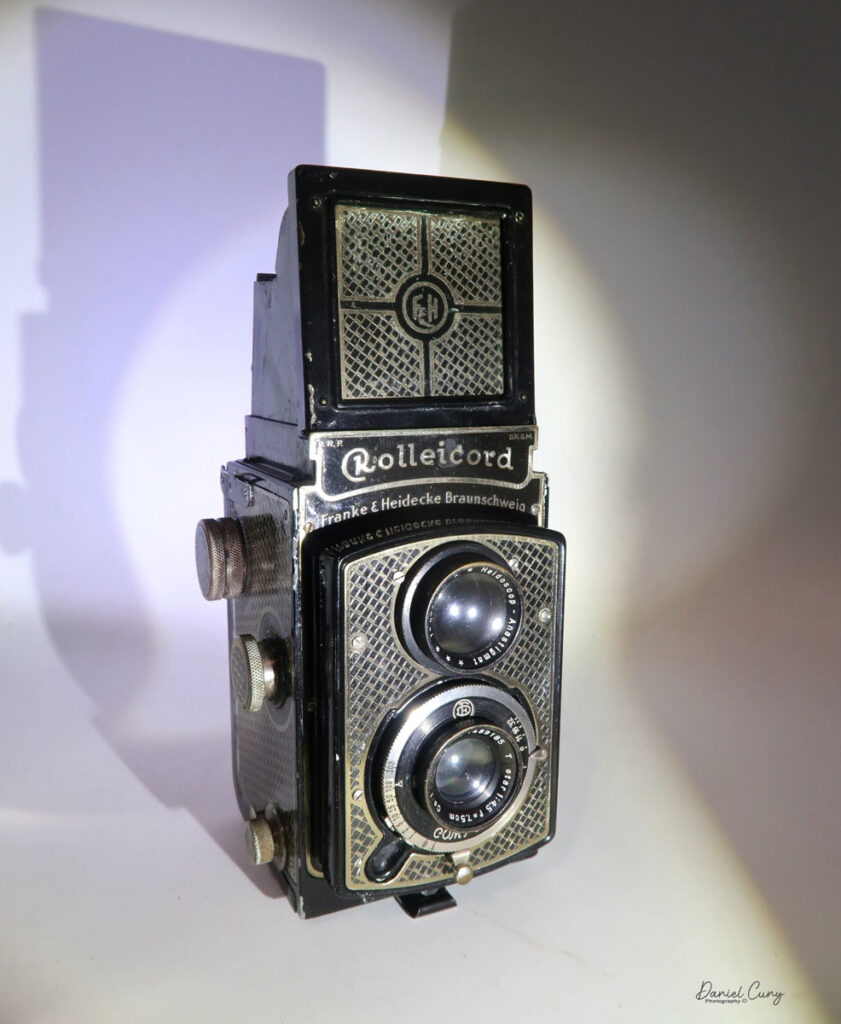
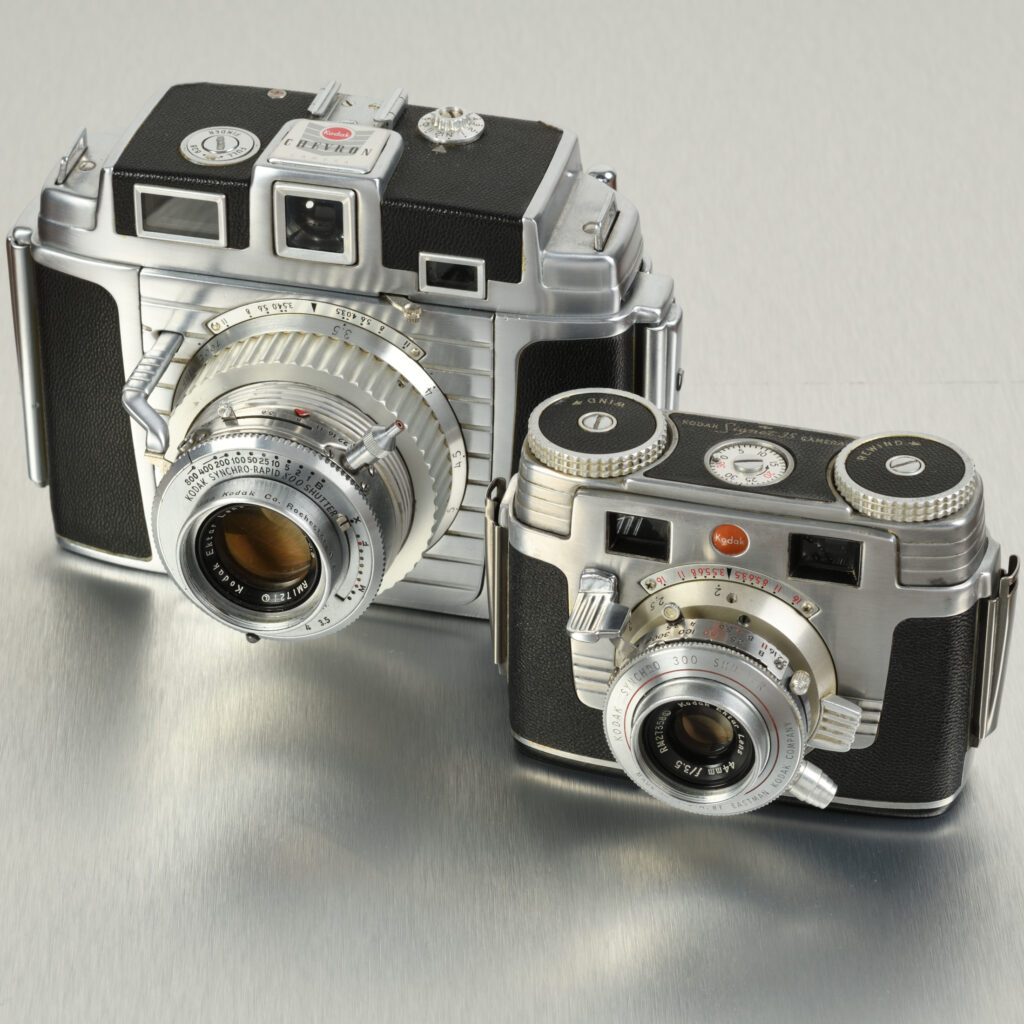




Comments
Stephen Scarlett on Pentax 67II – The Perfect Travel Camera
Comment posted: 18/11/2024
Love the B& W shots (particularly the pool patterned swimmer and the abandoned house,which is not unlike my own dwelling place.)
If the earlier models are not quite so reliable perhaps it may be worth getting two so I can carry a back-up for my holiday snaps ?
Keep up the good work, all the best-
Steve
Comment posted: 18/11/2024
Comment posted: 18/11/2024
Bob Janes on Pentax 67II – The Perfect Travel Camera
Comment posted: 18/11/2024
Comment posted: 18/11/2024
Geoff Chaplin on Pentax 67II – The Perfect Travel Camera
Comment posted: 18/11/2024
Comment posted: 18/11/2024
Tony on Pentax 67II – The Perfect Travel Camera
Comment posted: 18/11/2024
Also, I match your personal description except for owning too many cameras. At least that’s what I tell my wife.
Comment posted: 18/11/2024
Louis A. Sousa on Pentax 67II – The Perfect Travel Camera
Comment posted: 18/11/2024
Comment posted: 18/11/2024
Daniel Castelli on Pentax 67II – The Perfect Travel Camera
Comment posted: 19/11/2024
Alexander Seidler on Pentax 67II – The Perfect Travel Camera
Comment posted: 19/11/2024
Comment posted: 19/11/2024
Ibraar Hussain on Pentax 67II – The Perfect Travel Camera
Comment posted: 19/11/2024
I especially like the one with the flare and poppies.
But a travel camera? I once had a Rolleiflex 6008i and that was the worst decision of my life taking that beast for a day trip.
Comment posted: 19/11/2024
Stefan Wilde on Pentax 67II – The Perfect Travel Camera
Comment posted: 19/11/2024
But even though the GAS is strong with me, I shall pass on the P67. An incredible machine, no doubt, but I'll travel with the Rolleiflex anyway and a Rollei 35s because... because I can, I suppose. Not that I had no choice, the amount of cameras I possess is ever increasing, yet the Rolleiflex gently waves them all aside and quietly insists on its prerogative to come along as my ultimate travel camera. I found it only tolerates the 35s as a companion. Nothing else, of whatever esteemed provenance will do.
So what exactly is it that keeps me buying a camera or two every year, only condemning these beauties to a life in the shadow of the majesty of Braunschweig? I believe I know the answer, but I have locked it away in a drawer with a sticky note on it that says "Only open if you need to feel utterly moronic."
Talking about that, I feel even more idiotic looking at your splendid photography and comparing it to my - considerably inferior - own. I really shouldn't bother with a camera at all, except as you say above, it is so much fun regardless of the mediocrity of the end result. And when traveling, a Rolleiflex is guaranteed to get you into trouble at the airport as well which is entertaining and it will spark conversation wherever you go and that really makes it worthwhile for me.
To wrap up: Great post, great pictures, please keep them coming!
Comment posted: 19/11/2024
James Evidon on Pentax 67II – The Perfect Travel Camera
Comment posted: 19/11/2024
But that is not my reason for commenting on this marvelous essay by Patrick Mead. He has written one of the most instructional and enjoyable essays I've ever read on this excellent website. His examples and comments on the various film and compositional choices for the 6x7 format is one of the best I've read. I hope to see more by this very entertaining photographer.
James Evidon on Pentax 67II – The Perfect Travel Camera
Comment posted: 19/11/2024
I hope we see more of Patrick's excellent photographic essays in the future.
Comment posted: 19/11/2024
Eric on Pentax 67II – The Perfect Travel Camera
Comment posted: 20/11/2024
Comment posted: 20/11/2024
ARTHUR W GOTTSCHALK on Pentax 67II – The Perfect Travel Camera
Comment posted: 20/11/2024
Harry Machold on Pentax 67II – The Perfect Travel Camera
Comment posted: 26/11/2024
And this I said with the greatest respect..
I never tried a Pentax 67 of sort; however I am tempted and for years already.
I use 6x6 and 6x7 in form of some Mamyia RB 67 and the line of Hasselblad V lenses, Mamya 645 and Schneider/Pentacon Six and Kiev 88 on my Leica S cameras; a similar effort to make you sweat instantly..
But this all is great joy and worth the effort..
Thank you for this article..
Harry Machold
Comment posted: 26/11/2024
Adrian Riu on Pentax 67II – The Perfect Travel Camera
Comment posted: 19/12/2024
Comment posted: 19/12/2024